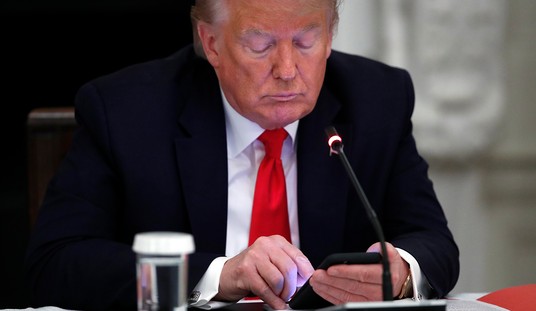Artificial Intelligence (AI) is a remarkable tool with wide-ranging uses and implications. It is the ultimate development of this third great revolution of humankind, that being the Information Revolution, which followed the Agricultural and Industrial Revolutions. AI can help us in many ways, in many areas ranging from energy to medicine, by allowing us to examine data faster, more completely.
Now AI cannot, at present anyway, create. It can't produce an original work of art or an original piece of literature, for example. It can only reshuffle what has already been produced; it can alter, it can find new ways to fit things together, but it can't produce new, original work. But finding new ways for things to fit together can be helpful, and it can be dangerous, especially when talking about chemical and biological weapons. Of the two, biological weapons should be the greatest concern.
The greatest threat to America may be something we cannot see.
Biological and chemical weapons can spread debilitating fear and wreak havoc on populations. Unfortunately, the threat of these kinds of attacks on American soil is only rising, empowered by the unique capabilities of artificial intelligence. To prevent catastrophe, we must use AI to counter the danger that this advanced technology can unleash.
We are only one misstep away from catastrophe. The most recent close call came last month when two Chinese nationals, who received funding from their communist government to work on a noxious fungus, were caught smuggling the pathogen into the United States. The FBI arrested them just in time, as this was no ordinary fungus—instead, it was what scientists call an “agroterrorism weapon” that would have decimated America’s grain farms, sickened the U.S. population, and disrupted our nation’s food supply.
China is meddling with things they cannot possibly comprehend, it seems, and we should note that this attempt by two Chinese nationals was almost certainly not an isolated incident.
Yunqing Jian, 33, and Zunyong Liu, 34, citizens of the People’s Republic of China, were charged in a criminal complaint with conspiracy, smuggling goods into the United States, false statements, and visa fraud, announced United States Attorney Jerome F. Gorgon, Jr.
Gorgon was joined in the announcement by Special Agent in Charge Cheyvoryea Gibson, Federal Bureau of Investigation, Detroit Division and Marty C. Raybon, Director of Field Operations, U.S. Customs and Border Protection.
The FBI arrested Jian in connection with allegations related to Jian’s and Liu’s smuggling into America a fungus called Fusarium graminearum, which scientific literature classifies as a potential agroterrorism weapon. This noxious fungus causes “head blight,” a disease of wheat, barley, maize, and rice, and is responsible for billions of dollars in economic losses worldwide each year. Fusarium graminearum’s toxins cause vomiting, liver damage, and reproductive defects in humans and livestock.
The use of AI could take this kind of threat to the next level.
Read More: Now Proponents of Eugenics Have More Tools Than Ever
Could Artificial Intelligence Drive New Breakthroughs in Fusion Power?
Biological weapons, speaking as a biologist, scare the absolute kapok out of me, and they should scare everyone. A nuclear weapon goes off with a city-busting flash and bang, but once the bomb goes off, the worst is over; most of the damage is done by the heat, the shock, the big burst of gamma. Chemical weapons, once deployed, eventually degrade. But biological agents self-perpetuate; they adapt, they spread themselves, and an agent engineered with a long lead time, one that has an incubation period measured in days or weeks, could spread throughout much of a population before many realize they are sick, before any symptoms appear. Now, AI can only present possibilities; it still takes physical work in a laboratory to produce a pathogen, to test it, to make it in quantity for deployment, and this can be done with or without AI support.
This is a technology with possible civilization-ending potential. So, what to do about it?
Perhaps we can, as it were, set a thief to catch a thief; use AI to counter what other AI has produced.
The private sector is already on the case. Companies like Renovaro, and OpenAI, two U.S.-based AI firms, are already applying machine learning to both prevent AI from producing recipes for weaponry and to identify and counter biological and chemical threats before they can spiral out of control.
New coding produced by top AI experts can be applied to any large language model to prevent it from teaching users how to make weapons of mass destruction. For those pathogens that slip through the cracks, Renovaro’s AI has the potential to develop antidotes to biological and chemical samples within five days, lightyears faster than the long months it took to develop vaccines and effective treatments for COVID-19.
President Trump promised a golden dome to protect America from missile attacks—a worthwhile initiative. Yet the next war may be started not by a missile, but by a microbe. We need a biological golden dome, and AI can make it.
There's just one problem. Any such application is essentially reactive. By the time a new pathogen is identified, isolated, and understood, even with the help of AI analysis tools, it may well have already spread through a significant portion of the population. Yes, the use of AI to counter AI would be a huge help, and may save millions - or it may spit out another COVID vaccine, of decidedly questionable effectiveness.
Yes, we should be prepared. Yes, part of our national defense should be - must be - planning to counter deliberately produced biological weapons. But we should harbor no illusions about how frighteningly effective these agents can be, and how fast they can spread.
I've said, and written, for some years now that the Great War, World War 1, was the war of chemistry, while World War 2 was the war of physics. The Great War saw the widespread use of chlorine and mustard gas, among other chemical weapons. World War 2, of course, saw the first and (so far) the only employment of nuclear weapons in war. But any World War 3, should we have one, will be the war of biology, and that poses a greater threat than all of the others combined. And in any such conflict, AI may be of use, but finding and striking any enemy's laboratories and production facilities will be what's required.
Speaking as a biologist, this is a conflict I hope we never have to fight. But we'd better be prepared for it.














